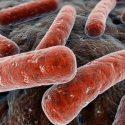In the battle against invasive aquatic species, Wisconsin bait shops are on the front line
Wisconsin bait dealers are aware of the risks associated with aquatic invasive species, and they are taking steps to help address the problem, a new University of Wisconsin–Madison study indicates.
That’s good news, because bait shops are on the front lines in the battle to stop the spread of invasive plants, animals and diseases in Wisconsin’s lakes and rivers, says Bret Shaw, an Extension environmental communication specialist and assistant professor in the UW–Madison life sciences communication department.
“Bait business owners and employees are important partners in helping spread the word, because they interact with these anglers and boaters on a daily basis and understand the damage that invasive species can cause to lakes in the state,” Shaw says.
The researchers explored the possible role that Wisconsin bait businesses play in communicating to anglers and boaters about aquatic invasive species and fish diseases like viral hemorrhagic septicemia (VHS).
More than 20 species of non-native plants and animals threaten Wisconsin’s lake and river systems. These newcomers disrupt ecosystems to the detriment of native species and decrease the economic value of the state’s surface waters.
According to the study, about 68 percent of bait business owners said that they had heard a lot about the problem in Wisconsin, and 59 percent said they believe that aquatic invasive species are a serious threat to Wisconsin’s fisheries.
But there still seems to be a significant knowledge gap. Only about 45 percent of the bait shop owners consider themselves to be very knowledgeable about the spread of aquatic invasives, and they felt even less confident in their customer’s understanding of the issue. Only 14 percent said that their clientele knew “quite a bit” or “very much” about the spread of invasive species in Wisconsin waterways.
The bait industry seems more than willing to do its part. About 71 percent of the respondents believe that they can play an important role in the prevention of invasive species and VHS, and more than 70 percent said that they display educational materials about these problems in their stores.
Asked about the best way to inform anglers, the bait dealers’ first suggestion was to make use of fishing organizations and websites. They also suggested reaching people through conversations at boat landings, at their bait stores and through the media. As for their own participation, bait shop owners’ first preference was to put up signs and posters, followed by handing out literature and selling bait containers with aquatic invasive species laws printed on them.
The dealers’ ideas will be a big help in fine-tuning efforts spread the word, says Dominique Brossard, co-investigator on the study and associate professor in the life sciences communication department.
“Feedback from bait business owners is essential in creating effective messages,” Brossard says. “With their help, we are more likely to encourage behavior change among anglers and boaters and will be more successful in protecting Wisconsin’s lakes and rivers.”
Brossard and Shaw have been working closely with the state Department of Natural Resources and UW-Extension to research how to communicate more effectively in the state to prevent the spread of aquatic invasive species in Wisconsin.
“Protecting Wisconsin’s natural resources is a shared responsibility,” says Shaw. “We are fortunate that many bait businesses are doing their part to make a difference.”
The research was conducted by the Department of Life Sciences Communication by Shaw and Brossard and graduate students Kajsa Dalrymple and Allison Howell at UW–Madison, in partnership with the Wisconsin Department of Natural Resources and UW-Extension.



